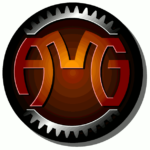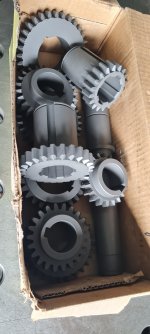Hi Garwood:
There is a guy who used to post regularly on here named Zahnrad Kopf.
He is a gearmaker by trade and had only unkind things to say about trying to hob decent quality gears with a hobbing head on a CNC lathe.
His complaint was multi faceted, but as I recall, he complained of both the rigidity of these units and of their accuracy. I don't recall him explaining what it was that made them intrinsically inaccurate, but he seemed pretty adamant that you could not make a tight tolerance gear with one.
I trust his judgement!
Here's a link to his website if you want to reach out to him:
American Machine & Gear Works, Surgical, Medical, Dental, & Industrial Machining, Rapid Prototyping, & Gear Making

www.thegearmaker.com
Cheers
Marcus
www.implant-mechanix.com
www.vancouverwireedm.com
Thank you for the kind words, Marcus. As always, they are appreciated. (:>)
I *do* have some experience using the attachments and software on some turning centers. I have been extensively involved in evaluating and choosing some machines, based upon their performance, as well. And, as luck would have it, have been discussing this very topic with several of the machinery OEMs for the last 6 months while preparing to purchase a machine for the shop.
The bottom line is that they still basically suck. For all of the same reasons that I have written about here on this forum (and some others, in the past. Basically, it just boils down to rigidity and electronics being the biggest culprits. Mostly, it's rigidity. After those two reasons, it starts getting into applications and ease of use specifics.
End result - No one will put their name on the line guaranteeing anything past a Q7. And even *that* pithy level will come with a stack of requirements that be observed. (specific materials, specific pitch, specific brand <partner> attachment, specific set up, specific moon phase of the year, etc... )
A good, quality tool holder will cost $15K - $25K, and that alone doesn't allow one into the dance. The machine has to have the <cough> "option" <cough> enabled. There's another $10K - $20K. Minimum buy-in at $25K to be allowed to make mediocre gears? No thank you. You can purchase a clapped out ancient Hobber and have it fully rebuilt for pennies on that particular dollar. And when you're done it will run circles around the turning center, all day, every day, 365 days a year.
Now, if you're just making mediocre gears and shafts all day, every day, then it might pay off in the long view. (like parallel spline shafts that have other features along the shaft) But for the money and effort, we will always have good, old, solid, gear driven gear machinery around here.
We are a machine shop. Not just a gear shop. Soon, one of our turning centers will have the ability to do this. And even then, the least quality-demanding gears that we make (SouthBend Lathe replacement gears) will *STILL* be made on real, actual gear making machinery. Because even a brand new, modern turning center with the most recent tooling and options cannot achieve the quality that we require while making even those.







